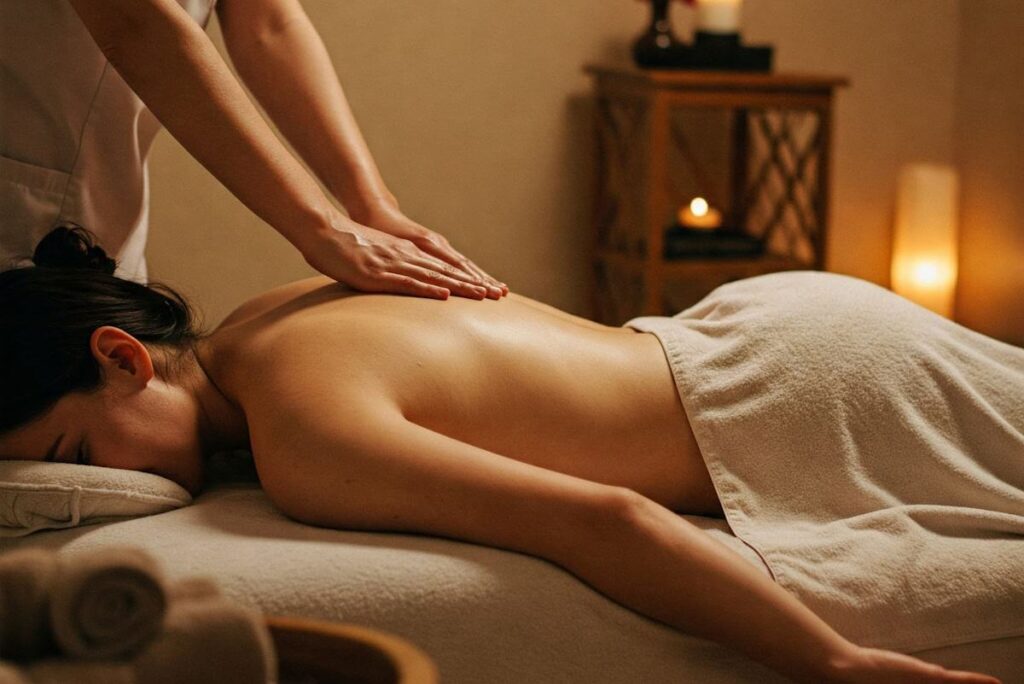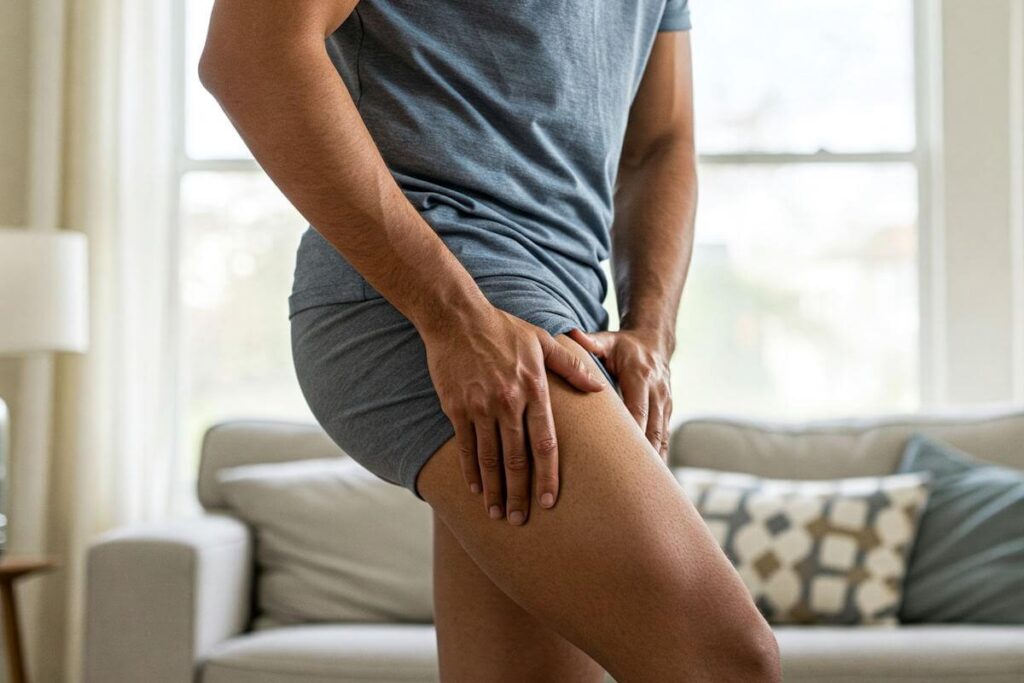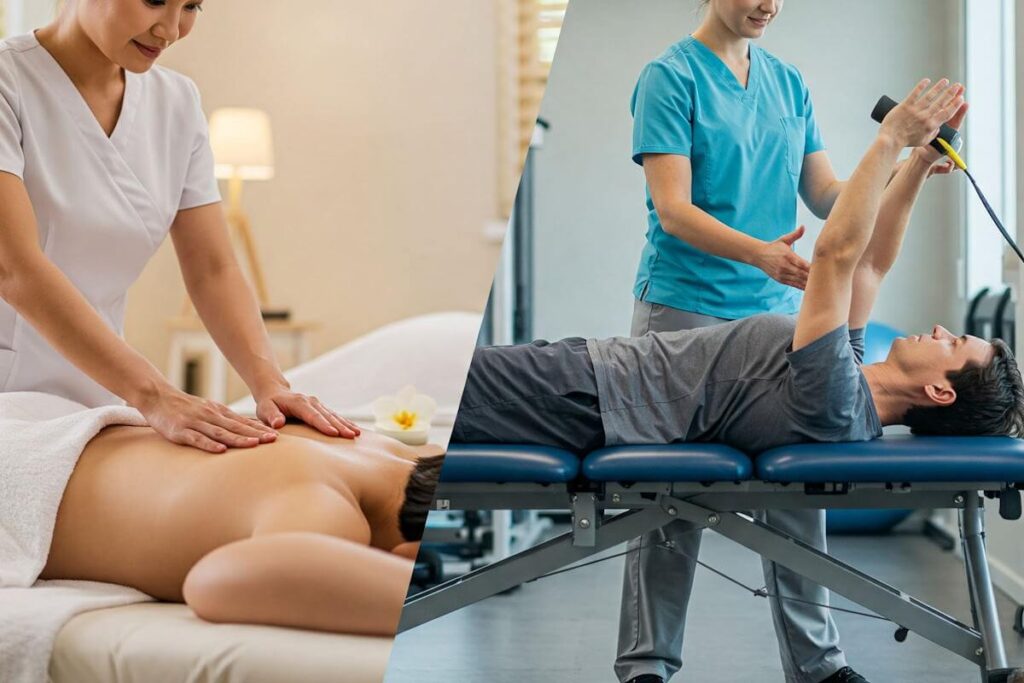Introduction to Massage Therapy
Massage therapy, a practice with roots that trace back thousands of years, has evolved significantly over time. Historically, ancient civilizations such as the Egyptians, Greeks, and Chinese utilized touch techniques to promote physical healing and relaxation. The word itself is derived from the Greek term “masso,” which means to knead or to touch. This age-old practice has stood the test of time, affirming its importance in various cultures as a vital component of healing and wellness.
In contemporary times, massage therapy transcends the notion of being merely a luxury service reserved for spas and salons. Instead, it has been increasingly recognized as a critical aspect of personal wellness and healthcare. Research has documented the many general benefits massage therapy offers, such as alleviating stress, enhancing mood, relieving muscle tension, and promoting better sleep. Furthermore, it can be an integral component of rehabilitation, often supporting recovery from surgeries, injuries, and chronic pain conditions.
Massage therapy encompasses a wide range of techniques and modalities, each tailored to address specific needs and preferences. Whether seeking relief from a specific ailment or simply wanting to indulge in relaxation, the versatility of massage therapy makes it applicable to almost anyone. As healthcare practices continue to prioritize holistic approaches, incorporating therapies like massage may not only improve physical well-being but also contribute positively to mental health.
As we further explore various types of massage, it is essential to consider personal preferences and desired outcomes. Understanding the different modalities available will allow individuals to choose the right approach that aligns with their wellness goals. Whether through deep tissue massage, Swedish techniques, or specialty therapies, the benefits can be both profound and transformative.
The Benefits of Massage
Massage therapy has long been recognized not only for its soothing qualities but also for its substantial health benefits, which can significantly enhance one’s quality of life. Numerous studies have documented the efficacy of massage in providing pain relief, making it a valuable option for individuals suffering from chronic pain conditions such as arthritis, fibromyalgia, or back pain. The manipulation of soft tissues promotes a reduction in muscle tension and soreness, allowing for greater mobility and comfort.
In addition to pain alleviation, massage serves as an effective method for stress reduction. The art of massage therapy induces relaxation by stimulating the release of endorphins, often referred to as “feel-good” hormones. This physiological response helps diminish anxiety and promotes a sense of overall well-being. Many individuals find that regular sessions of massage lead to enhanced mental clarity and improved mood, complementing the physical benefits.
Improved circulation is another key benefit associated with massage therapy. As therapists work on the body’s soft tissues, blood flow is increased, which can expedite recovery from injuries and boost overall cardiovascular health. Enhanced circulation helps deliver oxygen and nutrients to vital organs and tissues, further supporting the body’s healing processes.
Furthermore, massage can enhance flexibility, making it an ideal practice for athletes and those engaged in physical fitness. As muscles are gently stretched during a massage, the range of motion can significantly improve, allowing individuals to perform better in their daily activities or athletic performances. Overall, the physical and mental health improvements offered through regular massage therapy are substantial, making it a worthwhile consideration for those seeking to enhance their well-being.
Swedish Massage
Swedish massage is one of the most widely practiced forms of massage therapy and is famed for its ability to promote relaxation and overall well-being. This method employs a series of techniques that involve long, flowing strokes, kneading, and circular movements on the muscles. The primary aim of Swedish massage is to relax the entire body, alleviate muscle tension, and enhance circulation. In addition to these benefits, the massage techniques utilized in this form contribute to emotional calmness and improved energy levels.
The primary strokes used in Swedish massage include effleurage (gliding), petrissage (kneading), friction, tapotement (tapping), and vibration. Each technique serves a distinct purpose, whether it be to soothe tired muscles, enhance blood flow, or stimulate the nervous system. This combination of actions allows massage therapists to tailor the experience according to the client’s individual preferences and needs. For those who are new to massage therapy, Swedish massage is often recommended as an introductory experience due to its gentle nature.
Individuals who may benefit most from Swedish massage encompass a diverse range of people. This style is particularly advantageous for those experiencing high levels of stress, anxiety, or fatigue. Additionally, individuals recovering from injuries or those with chronic pain conditions may find considerable relief through the soothing strokes characteristic of Swedish massage. Furthermore, this therapeutic approach can foster increased flexibility, leading to improved physical performance in various activities. Overall, Swedish massage provides a holistic approach to well-being, seamlessly integrating relaxation with therapeutic benefits.
Deep Tissue Massage
Deep tissue massage is a specialized form of therapeutic bodywork designed to alleviate chronic muscle tension and pain. This technique focuses on the deeper layers of muscle and connective tissues, employing firm pressure and slow strokes to reach the underlying areas of discomfort. Unlike traditional relaxation massages, which may only address surface muscles, deep tissue massage aims to identify and treat specific problem areas, making it particularly effective for individuals experiencing persistent pain, postural issues, or recovery from sports injuries.
The uniqueness of deep tissue massage lies in its methodical approach to manipulating the fascia and muscles. Therapists often utilize their elbows, forearms, and fingers to provide the necessary pressure, allowing them to break down adhesions and alleviate tightness within the muscle fibers. This technique can be highly beneficial for athletes as it not only addresses injuries but also enhances overall performance by improving flexibility and range of motion. For individuals with desk jobs or those who lead sedentary lifestyles, deep tissue massage can help alleviate the strain caused by prolonged sitting and improper posture, ensuring a better quality of life.
Benefits of deep tissue massage extend beyond immediate muscle relief. The process promotes increased blood circulation, which can expedite healing and enhance the delivery of nutrients to injured tissues. Additionally, it may assist in reducing inflammation and promoting relaxation, contributing to an overall sense of well-being. Notably, clients often report improved sleep patterns and reduced anxiety levels following deep tissue treatments.
For those considering this massage technique, it is essential to consult with a qualified massage therapist, as personalized assessments can ensure that the treatment aligns with individual needs, especially for people recovering from sports injuries or on-the-job injuries.
Sports Massage
Sports massage is a specialized form of bodywork designed specifically for athletes and physically active individuals. This type of massage focuses on the needs of those who participate in sports, helping to enhance performance, prevent injuries, and facilitate recovery. The techniques employed in sports massage are tailored to address the stress and strains that athletes place on their bodies, making it an essential component of any sports training regimen.
One of the primary benefits of sports massage is its ability to improve overall athletic performance. By manipulating specific muscle groups, a sports massage therapist can help athletes achieve greater flexibility and range of motion. This not only allows for more fluid movements during physical activities but also contributes to better muscle coordination. Furthermore, regular sessions can assist in optimizing muscle function, which in turn enhances an athlete’s performance in their chosen sport.
In addition to performance enhancement, sports massage is effective in injury prevention. By targeting key muscle groups that bear the brunt of intense physical activity, such as the quadriceps, hamstrings, and shoulders, sports massage can identify and address potential problem areas before they escalate into significant injuries. The application of techniques like deep tissue manipulation and trigger point therapy helps release muscle tension and alleviate discomfort, enabling athletes to maintain peak condition and minimize downtime due to injuries.
Recovery after strenuous activity is another vital area where sports massage proves valuable. It aids in the removal of metabolic waste, such as lactic acid, from the muscles, which can accumulate during exercise. The enhanced blood circulation achieved through massage not only promotes quicker recovery but also soothes sore muscles. Techniques such as effleurage and petrissage are commonly used to promote relaxation and healing, making sports massage a crucial aspect of post-training recovery protocols.
Hot Stone Massage
Hot stone massage is a therapeutic technique that employs smooth, heated stones placed on specific points of the body to promote relaxation, alleviate tension, and enhance overall wellness. Originating from ancient healing practices, this massage style integrates the use of heated basalt stones to improve blood circulation and provide relief for sore muscles. These stones are typically heated in water and then carefully placed on areas such as the back, hands, and feet, allowing their warmth to penetrate deeply into the tissue.
The warmth from the stones aids in increasing blood flow, which can help in alleviating muscle stiffness and promoting a sense of tranquility. During a hot stone massage session, the therapist may also apply pressure with the stones in conjunction with traditional massage techniques, further enhancing the relaxing effects of the treatment. By combining the power of heat with manual manipulation, this therapy can significantly improve flexibility and decrease muscle tension, making it a preferred choice for individuals seeking relief from stress and physical discomfort.
Hot stone massage is particularly beneficial for individuals who suffer from chronic pain, anxiety, or are simply seeking a deeper state of relaxation. However, this type of therapy may not be ideal for everyone. Individuals with certain conditions, such as diabetes, high blood pressure, or those who are pregnant, should consult their healthcare provider before undergoing this treatment. Ultimately, understanding the unique properties and benefits of hot stone massage can empower individuals to make informed decisions about their self-care practices, leading to a more personalized and effective approach to relaxation and wellness.
Aromatherapy Massage
Aromatherapy massage is a holistic treatment that merges the therapeutic effects of massage with the aromatic properties of essential oils. This type of massage aims to enhance physical and emotional well-being by utilizing the scents of natural plant extracts. Various essential oils possess unique qualities that can promote relaxation, relieve stress, and enhance the overall sensory experience during the massage session.
Each essential oil offers distinct benefits. For example, lavender oil is widely recognized for its calming properties, making it an excellent choice for individuals seeking relaxation. Similarly, eucalyptus oil may assist in clearing the mind and has properties that are often associated with respiratory wellness. Meanwhile, citrus oils, such as orange or lemon, can invigorate the senses and uplift mood. By selecting the appropriate essential oils, practitioners can tailor aromatherapy massage to meet the specific needs of each client.
The application of essential oils during a massage not only enhances the therapeutic experience but also engages the olfactory senses, which can evoke emotions and memories, further deepening the relaxation process. As the therapist employs various massage techniques, the blend of soothing touch and aromatic scents can create an overall ambiance of tranquility.
It is important to disclose any allergies or sensitivities to essential oils prior to undergoing aromatherapy massage. A qualified therapist will typically conduct a brief consultation to ensure that the selected oils align with the client’s preferences and health conditions. Whether an individual seeks pain relief, stress reduction, or an overall sense of well-being, aromatherapy massage presents a holistic approach that harmoniously integrates the benefits of both massage therapy and essential oils.
Thai Massage
Thai massage is a unique and ancient form of bodywork that combines acupressure, reflexology, and assisted yoga postures. Originating from Thailand, this therapeutic practice is deeply rooted in Buddhist principles and holistic philosophy, which views the body as a whole entity that thrives on balance and harmony. Unlike many western massage styles that typically involve the application of oil and focus on relaxation, Thai massage is performed on a mat while the recipient remains fully clothed. This approach allows for a more dynamic interaction between the practitioner and the individual receiving the massage.
The techniques utilized in Thai massage involve a series of rhythmic compressions, stretches, and movements that aim to promote flexibility and energy flow throughout the body. Practitioners use their palms, thumbs, elbows, knees, and feet to apply pressure on specific energy lines known as “sen.” This approach not only addresses areas of tension but also enhances circulation and aids in the release of toxins from the body. As a result, the benefits of Thai massage extend beyond mere physical relaxation; clients often report improvements in mental clarity and emotional well-being.
One of the key advantages of Thai massage is its ability to increase flexibility. The yoga-like stretches incorporated within the treatment help to loosen tight muscles and promote a wider range of motion. Additionally, the deep pressure techniques stimulate blood flow, rejuvenating the body’s energy reserves, often leading to overall feelings of vitality and rejuvenation. Furthermore, the practice encourages mindfulness, as it requires individuals to focus on their body’s sensations and breathe deeply during the session. By integrating these various elements, Thai massage not only facilitates physical healing but also enhances the individual’s connection to themselves, fostering a deeper sense of inner peace.
Choosing the Right Massage for You
When it comes to selecting the appropriate massage therapy for individual needs, it is crucial to consider several factors that play a significant role in the decision-making process. First and foremost, identifying specific concerns or areas of tension is essential. For instance, if you are experiencing chronic pain or muscle tightness, a deep tissue massage may be more suitable, as it targets deeper layers of muscle and connective tissue. Conversely, if you are seeking relaxation or stress relief, a Swedish massage, known for its light and gentle strokes, might be a better fit.
Your wellness goals should also guide your choice. Are you looking for a remedy to specific ailments, or do you simply wish to unwind and recharge? Various techniques cater to different objectives; for instance, sports massages are designed to enhance athletic performance and recovery, while aromatherapy massages involve essential oils that promote relaxation and emotional balance. Thus, aligning the type of massage with your wellness goals will ensure a more fulfilling experience.
Another consideration is your personal comfort level with various massage techniques. Some individuals may prefer gentle approaches, while others may enjoy more intense pressure. If you have never experienced a particular type of massage, it can be helpful to have an open discussion with your therapist about your preferences and any health conditions that may influence your treatment. This dialogue allows the therapist to tailor the session to suit your unique needs, ensuring a more satisfactory outcome.
In summary, by considering your specific concerns, wellness goals, and personal comfort levels, you can make an informed decision about which type of massage is right for you. Taking the time to understand your preferences and needs ultimately paves the way for a beneficial and effective massage experience.




